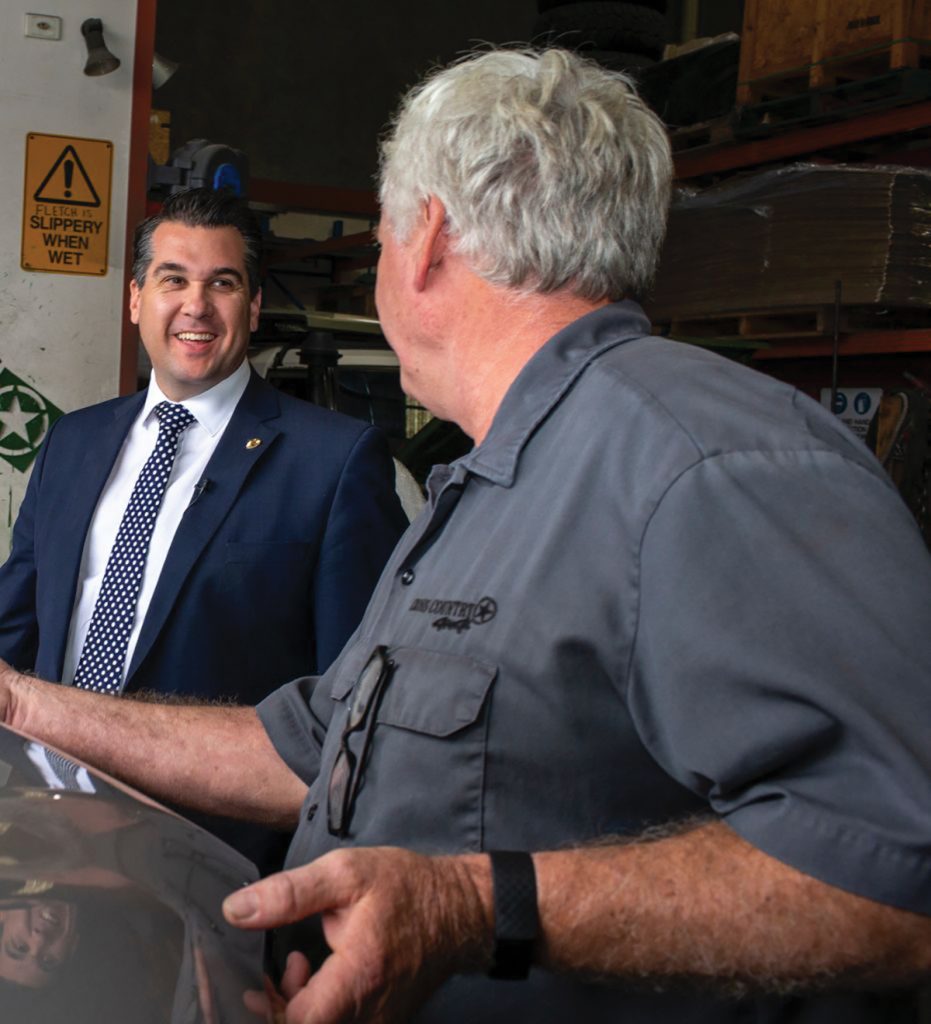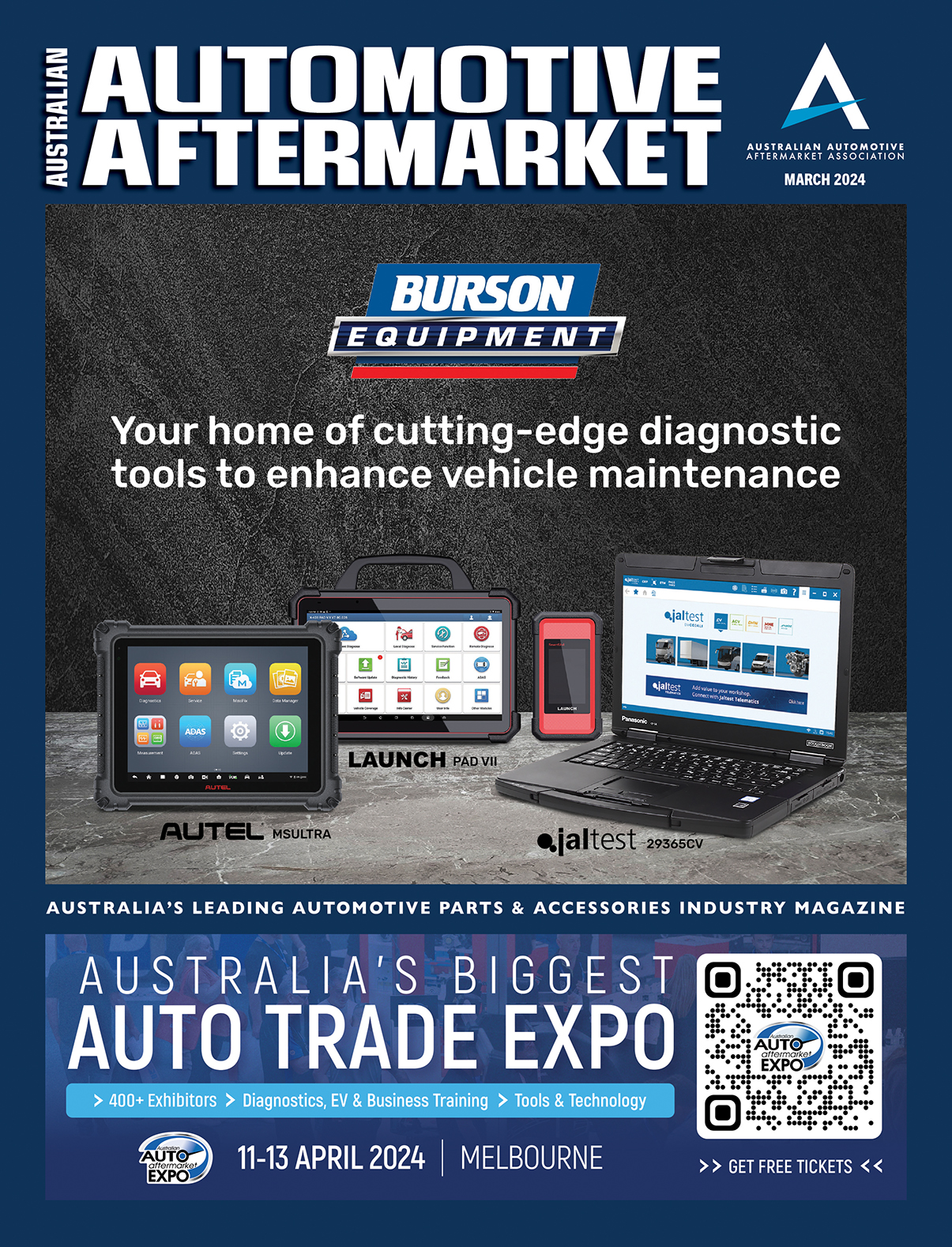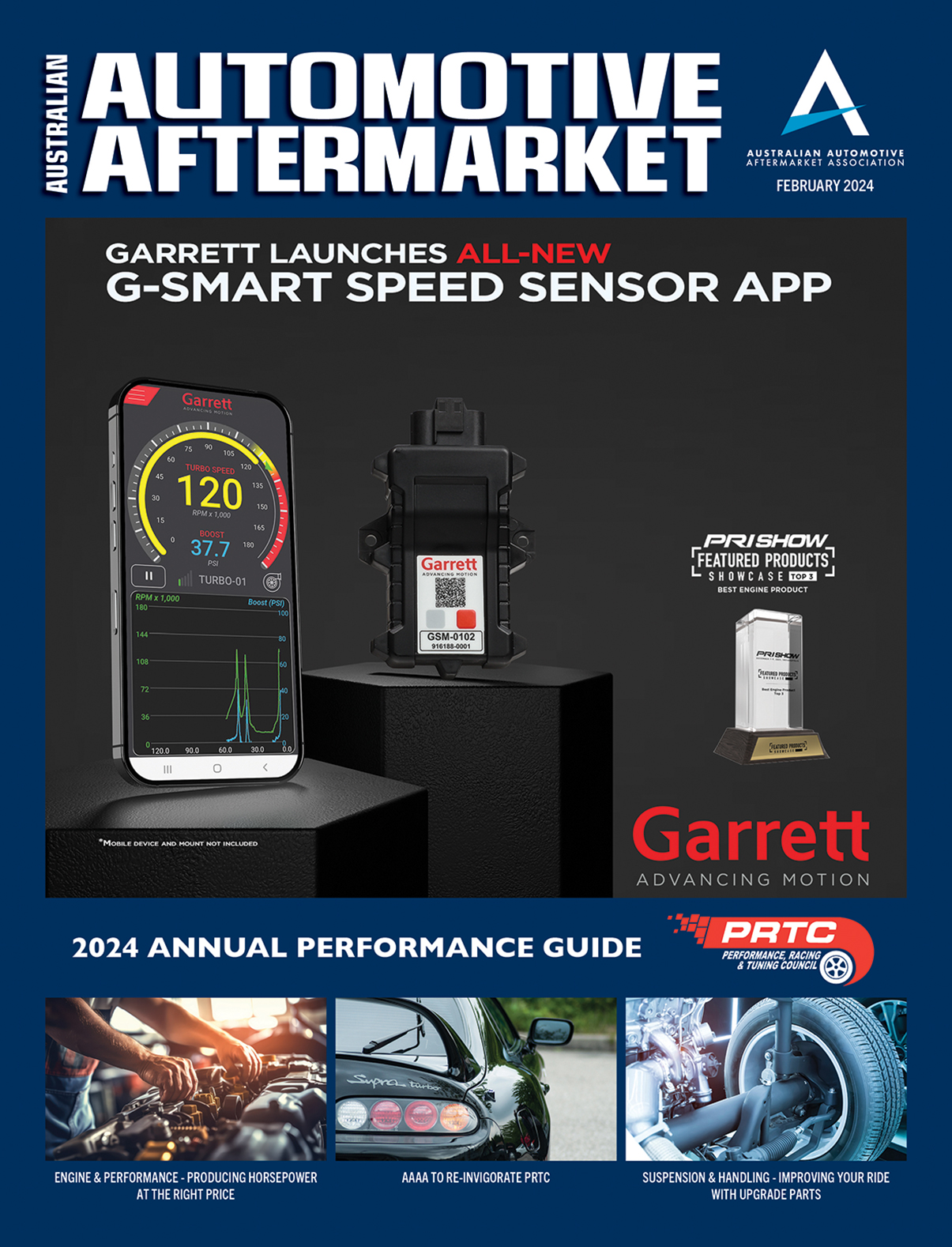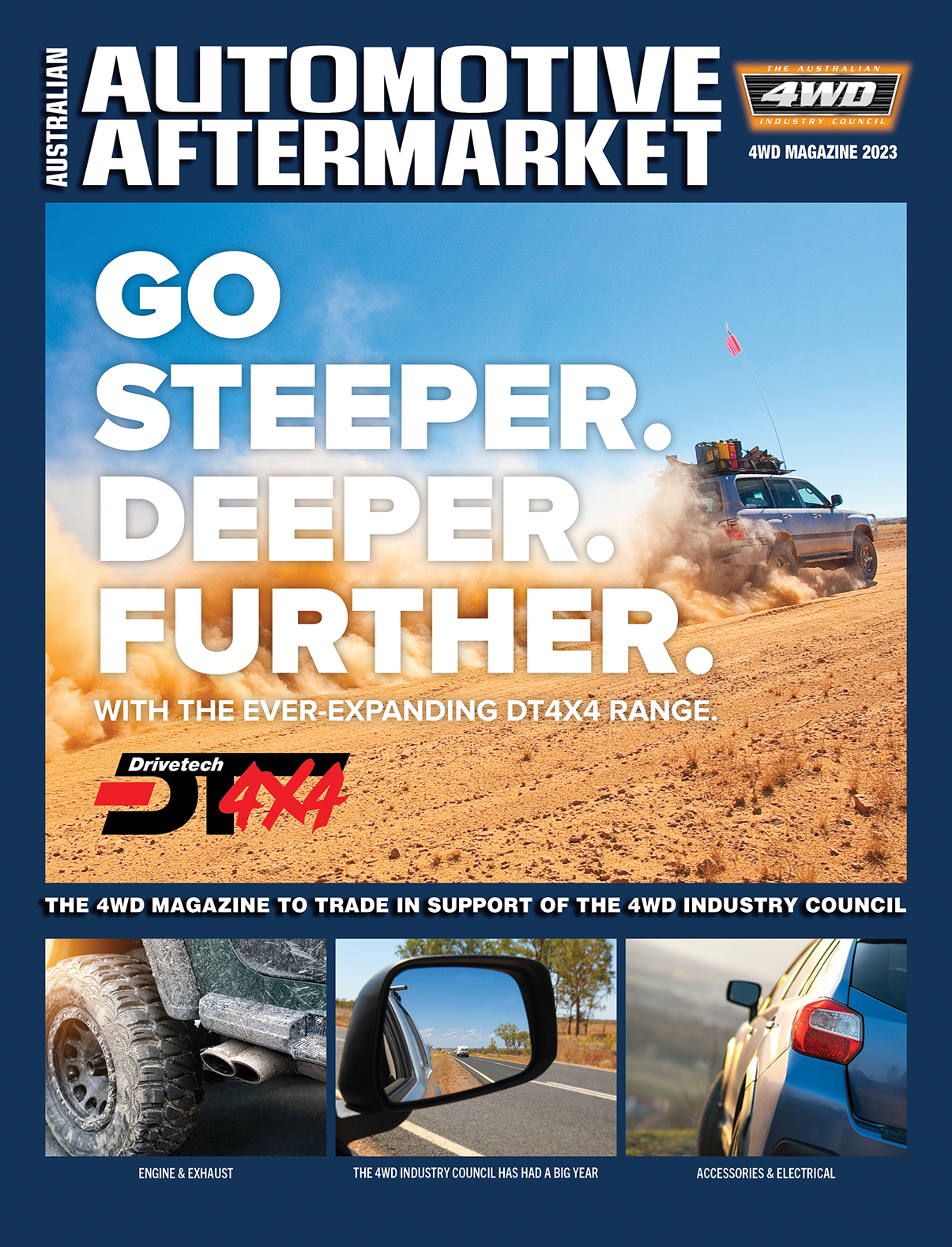NEW MANDATORY DATA SHARING ADMINISTERING BODY GEARS UP
Minister Sukkar discusses the next steps as the Government funds AASRA

Federal Government Minister, Michael Sukkar – a long-time advocate of a fair and open automotive repair and service sector – was instrumental in the Government’s passing of recent laws that will force car manufacturers to share data with independent service and repair workshops. Car manufacturers in Australia must abide by the laws from July 1, 2022.
The Government has appointed the Australian Automotive Service and Repair Authority Limited (AASRA) as Scheme Adviser for the mandatory scheme. It has also given a grant of $250,000 to AASRA, which will assist it to establish an online portal to facilitate access to information about motor vehicle service and repair and make it easier for vehicle manufacturers to comply with their obligations under the Scheme and for repairers to access scheme information (see news story here).
AAAM recently caught up with Minister Sukkar to discuss the implementation of AASRA, the grant and the next steps in this exciting development.
AAAM: How important is it for the AASRA to be well resourced?
Minister Sukkar: Ensuring AASRA has the means to carry out its functions as the Scheme Adviser and facilitate the sharing of scheme information is vital to the Scheme’s ongoing success. I have full confidence in AASRA’s Board of Directors to meet this challenge.
AAAM: Apart from this significant grant, what measures will the Government put in place to ensure that it has the authority that AASRA needs to ensure fair play between vehicle manufacturers and independent repairers?
MS: The Government has worked collaboratively with industry to develop robust legislation to underpin the Scheme and level the playing field for all participants across the automotive industry.
The Scheme establishes the ACCC as the regulator responsible for monitoring compliance and enforcement. The Government has funded a dedicated team in the ACCC to ensure industry has a clear understanding of its role and functions and will closely monitor the implementation of and compliance with the Scheme.
AAAM: Will AASRA have the direct backing of the ACCC should any of the parties arrive at an impasse? And how will this work?
MS: The ACCC and AASRA will work together to ensure the Scheme is efficient and any issues are quickly identified and resolved. The Government will work with AASRA to assist it to meet these obligations, and ensure that manufacturers, repairers, registered training organisations and consumers have a voice in helping to keep the Scheme effective and relevant.
AAAM: Do you believe that the vehicle manufacturers will meet their obligations under the Scheme by the July 1 deadline?
MS: This Scheme provides a strong incentive for vehicle manufacturers to comply with these new obligations. A maximum penalty of $10 million could apply in circumstances where vehicle manufacturers fail to comply with the Scheme. The ACCC will be responsible for monitoring compliance and taking action where necessary.
AAAM: How much of the scheme is unique to Australia and how much draws from international experience?
MS: While the Government has looked at other established arrangements, such as the US National Automotive Service Task Force (NASTF), Australia’s Scheme is mandatory, rather than opt-in or voluntary. The Australian legal framework and automotive industry is unique, and the Scheme has been tailored to the needs of the local automotive market.
AASRA and the AAAA have been working closely with NASTF to learn from the experience in the US. This relationship has been particularly important in developing the online platform for accessing scheme information.
AAAM: This scheme is putting together parties that have been at odds with each other for a long time, how will the government help to build trust between the parties?
MS: The Government worked constructively with industry to develop technical aspects of the Scheme’s design and consulted extensively throughout its development.
The establishment of the AASRA, which includes representatives from four peak automotive industry organisations, demonstrates that all parties can come together and work collaboratively. This includes representatives for the dealers, OEMs, and the independent and aftermarket repair industry. The participating industry organisations have shown leadership in working together to develop a market-based solution to support compliance with the Scheme and the provision of scheme information through an online portal.
AAAM: Many ministers and others have tried to solve this problem, but it has only gained real traction in the past two years, how proud are you that this will form a part of your ministerial legacy?
MS: For many Australians, purchasing a car is a significant investment, particularly when you factor in ongoing costs, with the average household spending more than $1,500 a year on servicing and repairing their car.
Around one in ten motor vehicles taken to repair workshops can’t be serviced there because the workshops don’t have access to service and repair information. Consumers must then take their cars to the manufacturer or an affiliated repairer and are forced to pay higher prices because no one else can perform the work.
I want consumers to be able to access repair services in an open and fair market and this ground-breaking scheme will give consumers more choice about where their vehicle is repaired. By creating more competition in the market for repairs, the Scheme will lower prices and help keep more money in consumers’ pockets and support local small businesses.
AAAM: How do you expect the scheme will evolve into the future?
MS: I am focused on ensuring the Scheme we’ve worked hard to create is implemented effectively and that consumers and businesses see benefits as soon as it commences on 1 July. We have ensured the majority of vehicles on Australian roads are captured by the Scheme – that’s why it covers passenger and light goods vehicles manufactured from 2002.
The technical aspects of the Scheme’s operation, in particular safety and security matters, are captured in regulations known as the Scheme Rules. The rules provide the flexibility to quickly make any updates or tweaks that might be needed to ensure the Scheme operates as efficiently as possible and keeps pace with the rapidly evolving technological advancements in the automotive industry.
AAAM: Clearly this has been a major focus for the automotive industry and the Government, what is the next problem to fix in relation to automotive?
MS: The Government will work with the ACCC and AASRA to educate participants in the Scheme, including vehicle manufacturers, repairers and RTOs, and make them aware of their obligations under the legislation and Scheme Rules.
We are also continuing to work on a range of issues concerning the broader automotive industry, including reforms to automotive franchising. This includes options to achieve mandatory arbitration in automotive franchising, the merits of a standalone code, and whether to expand existing new dealership protections to other parts of the automotive sector.
For more information, visit www.michaelsukkar.com.au







